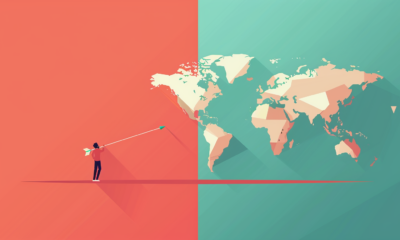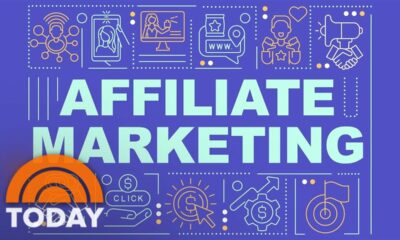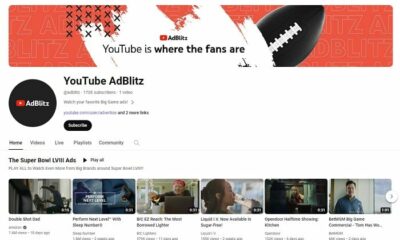SOCIAL
How to Take Advantage of Meta’s Advantage+ Shopping Campaigns

After a successful beta test, Meta launched Advantage+ Shopping Campaigns in August 2022, which have since been proven to be an incredibly effective way to drive traffic to your online store, and increase sales with less heavy lifting.
Meta’s Advantage+ shopping campaigns can help make your eCommerce store more visible, and generate more sales. In this post, we’ll take a look at what these campaigns entail, and how to set them up, along with advantages, limitations, and caveats, and how to use them in your process.
What are Advantage+ Shopping Campaigns?
Meta’s Advantage+ Shopping Campaigns, often abbreviated and called ASC, are automated product promotion campaigns that use machine learning to dynamically serve your ads to the audiences most likely to convert, while better utilizing your advertising budget.
ASC eliminates manual ad creation steps and according to Meta, ‘automates up to 150 creative combinations at once’.
How to set up a Meta Advantage+ Shopping Campaign
Using Meta Advantage+ Shopping Campaigns is relatively straightforward, which is an added benefit for those that may be newer to advertising on the platform or are small business owners.
To get started, click the ‘+Create’ button in Meta Ads Manager and select the sales campaign objective, then ‘Continue’.
Next, select ‘Advantage+ Shopping Campaign’ over the manual setup and click ‘Continue’.

As you’ll see on the next set-up screen, there are some targeting options and settings available, but most of your regular campaign options will be missing, as the purpose of the Advantage+ process is to leverage Meta’s AI and automation abilities, and not limit that with manual qualifiers.
Name your campaign accordingly, select a special ad category if applicable, select Website or Website and App (e.g. Shops on FB/IG) for your conversion location, your geotargeting, daily or lifetime budget, start and end dates, and your attribution setting.
When setting this up for the first time, you’ll notice the ‘Audience type breakdown’ area, where you can include existing customers in your account settings, and see audience type breakdowns between your new and existing customers.

In account settings, you can pull from your custom audiences customer lists or create new ones.

There is another field for suggested ads to run where you can review these, or import all ads. Meta recommends importing all suggested ads to start, and I also do as well, in order to see how they perform before you begin testing other tactics.
You can also go to the ad level to create new ads. Another tactic we often do with ASC is to add your top-performing ads from other campaigns and test here to see the results that ASC can deliver in comparison.
ASC Advantages
A key advantage of ASC is that it’s automated, leaving you with more time to focus on other aspects of your work as an advertiser or business owner.
The process is streamlined and efficient, and with the noticeable improvements Meta has made on the advertising front over the last year, leveraging their AI should produce more favorable results for you – more so since the iOS14 update that adversely impacted advertising in April 2021.
ASC Limits and Caveats
While ASC is plentiful in benefits, it is a significant change in how we’re accustomed to advertising on the platform, but that’s also part of the excitement of being in our line of work – it’s ever-evolving and keeps us employed as we grow, learn, and adapt.
One potential downside is that if you enjoyed audience research and selecting who and how to target, ASC limits that, as detailed in the aforementioned setup portion. There’s also no ad placement control, so your ads will serve wherever Meta decides.
Meta only allows up to 8 ASC’s per account. While also found that while most brands have one customer list, you can improve performance by segmenting your customer lists if your brand has multiple product lines (e.g. if you are a shoe brand and you sell boots, sneakers, and sandals). ASC may find it challenging to convert similar, but different customers using one customer list, so it can be better to segment your audiences, instead of bundling all of your customers together, in order to drive better returns and optimize.
ASC can be used for both prospecting and retargeting, but we’ve seen greater success top of funnel, in driving more sales, similarly to non-ASC catalog sales campaigns this year, so you may also want to spend more of your ASC budget top of funnel.
And surprisingly, despite widespread success, as reported by many advertisers (including from our own client accounts), not all accounts have access to ASC yet. If you don’t, keep an eye out, ask your Meta Ad reps, or reach out to chat support to see if requesting can help expedite access.
Take Advantage of ASC
Overall, Meta Advantage+ Shopping Campaigns offer an effective way for eCommerce brands to maximize reach and performance with less manual effort. By leveraging valuable data collected by Meta, businesses can utilize ASC to help them reach the right customers while still staying within budget constraints, and maximizing sales.
If you haven’t tested them out yet, consider setting up Meta Advantage+ Shopping campaigns in the new year to see what automation can do for you – and if you’re already up and running, continue testing new creatives and scaling in 2023.
A version of this post was first published on the Akvertise Inc. blog.
SOCIAL
Snapchat Explores New Messaging Retention Feature: A Game-Changer or Risky Move?

In a recent announcement, Snapchat revealed a groundbreaking update that challenges its traditional design ethos. The platform is experimenting with an option that allows users to defy the 24-hour auto-delete rule, a feature synonymous with Snapchat’s ephemeral messaging model.
The proposed change aims to introduce a “Never delete” option in messaging retention settings, aligning Snapchat more closely with conventional messaging apps. While this move may blur Snapchat’s distinctive selling point, Snap appears convinced of its necessity.
According to Snap, the decision stems from user feedback and a commitment to innovation based on user needs. The company aims to provide greater flexibility and control over conversations, catering to the preferences of its community.
Currently undergoing trials in select markets, the new feature empowers users to adjust retention settings on a conversation-by-conversation basis. Flexibility remains paramount, with participants able to modify settings within chats and receive in-chat notifications to ensure transparency.
Snapchat underscores that the default auto-delete feature will persist, reinforcing its design philosophy centered on ephemerality. However, with the app gaining traction as a primary messaging platform, the option offers users a means to preserve longer chat histories.
The update marks a pivotal moment for Snapchat, renowned for its disappearing message premise, especially popular among younger demographics. Retaining this focus has been pivotal to Snapchat’s identity, but the shift suggests a broader strategy aimed at diversifying its user base.
This strategy may appeal particularly to older demographics, potentially extending Snapchat’s relevance as users age. By emulating features of conventional messaging platforms, Snapchat seeks to enhance its appeal and broaden its reach.
Yet, the introduction of message retention poses questions about Snapchat’s uniqueness. While addressing user demands, the risk of diluting Snapchat’s distinctiveness looms large.
As Snapchat ventures into uncharted territory, the outcome of this experiment remains uncertain. Will message retention propel Snapchat to new heights, or will it compromise the platform’s uniqueness?
Only time will tell.
SOCIAL
Catering to specific audience boosts your business, says accountant turned coach

While it is tempting to try to appeal to a broad audience, the founder of alcohol-free coaching service Just the Tonic, Sandra Parker, believes the best thing you can do for your business is focus on your niche. Here’s how she did just that.
When running a business, reaching out to as many clients as possible can be tempting. But it also risks making your marketing “too generic,” warns Sandra Parker, the founder of Just The Tonic Coaching.
“From the very start of my business, I knew exactly who I could help and who I couldn’t,” Parker told My Biggest Lessons.
Parker struggled with alcohol dependence as a young professional. Today, her business targets high-achieving individuals who face challenges similar to those she had early in her career.
“I understand their frustrations, I understand their fears, and I understand their coping mechanisms and the stories they’re telling themselves,” Parker said. “Because of that, I’m able to market very effectively, to speak in a language that they understand, and am able to reach them.”Â
“I believe that it’s really important that you know exactly who your customer or your client is, and you target them, and you resist the temptation to make your marketing too generic to try and reach everyone,” she explained.
“If you speak specifically to your target clients, you will reach them, and I believe that’s the way that you’re going to be more successful.
Watch the video for more of Sandra Parker’s biggest lessons.
SOCIAL
Instagram Tests Live-Stream Games to Enhance Engagement

Instagram’s testing out some new options to help spice up your live-streams in the app, with some live broadcasters now able to select a game that they can play with viewers in-stream.
As you can see in these example screens, posted by Ahmed Ghanem, some creators now have the option to play either “This or That”, a question and answer prompt that you can share with your viewers, or “Trivia”, to generate more engagement within your IG live-streams.
That could be a simple way to spark more conversation and interaction, which could then lead into further engagement opportunities from your live audience.
Meta’s been exploring more ways to make live-streaming a bigger consideration for IG creators, with a view to live-streams potentially catching on with more users.
That includes the gradual expansion of its “Stars” live-stream donation program, giving more creators in more regions a means to accept donations from live-stream viewers, while back in December, Instagram also added some new options to make it easier to go live using third-party tools via desktop PCs.
Live streaming has been a major shift in China, where shopping live-streams, in particular, have led to massive opportunities for streaming platforms. They haven’t caught on in the same way in Western regions, but as TikTok and YouTube look to push live-stream adoption, there is still a chance that they will become a much bigger element in future.
Which is why IG is also trying to stay in touch, and add more ways for its creators to engage via streams. Live-stream games is another element within this, which could make this a better community-building, and potentially sales-driving option.
We’ve asked Instagram for more information on this test, and we’ll update this post if/when we hear back.
-

 PPC6 days ago
PPC6 days ago19 Best SEO Tools in 2024 (For Every Use Case)
-

 MARKETING7 days ago
MARKETING7 days agoEcommerce evolution: Blurring the lines between B2B and B2C
-
SEARCHENGINES5 days ago
Daily Search Forum Recap: April 19, 2024
-
SEARCHENGINES6 days ago
Daily Search Forum Recap: April 18, 2024
-

 WORDPRESS6 days ago
WORDPRESS6 days agoHow to Make $5000 of Passive Income Every Month in WordPress
-

 SEO7 days ago
SEO7 days ago2024 WordPress Vulnerability Report Shows Errors Sites Keep Making
-

 WORDPRESS7 days ago
WORDPRESS7 days ago10 Amazing WordPress Design Resouces – WordPress.com News
-

 SEO6 days ago
SEO6 days ago25 WordPress Alternatives Best For SEO
















You must be logged in to post a comment Login